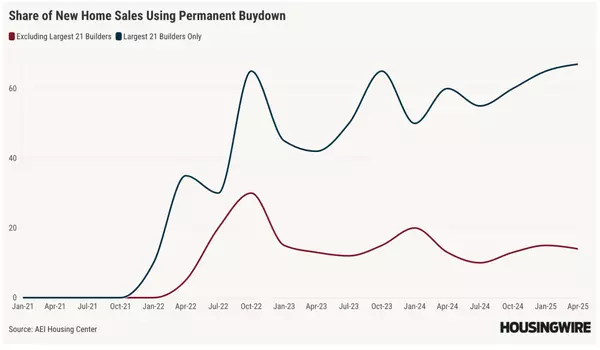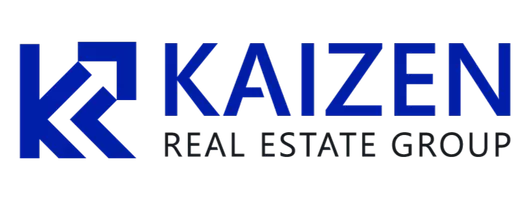There’s no such thing as a Realtor tax: Here’s what they’re missing

Benjamin Franklin famously said that nothing in life is certain except death and taxes. When I saw a recent article by Robert Bork Jr. claiming that the affordability crisis is due to some sort of “Realtor® tax,” I stopped in my tracks. The only Realtor® tax I’m aware of is the 15% self-employment t
Read MoreWeekly home sales look stronger than normal, but there’s a catch
We had a nice pop in our weekly pending home sales last week, and with mortgage rates near 2025 lows we could ask: Is housing breaking out? Not exactly. One of the themes I really stressed this year is that weekly data can be volatile around holiday weekends. So we always look at the two weeks of
Read MoreTech Pulse: MLS AI debate; CoStar disputes Zillow announcement

Welcome back to Tech Pulse — HousingWire‘s weekly series rounding up the latest in technology news, including tools, integrations and trends that impact mortgage and real estate. Here’s what happened this week: It’s up to MLSs to decide if the Zillow-ChatGPT integration violates IDX policies The Nat
Read MoreFannie Mae names new head of single family and acting general counsel

Fannie Mae on Friday announced the promotion of two long-time employees to lead its Single-Family business and general counsel’s office. “We are pleased to announce the promotion of Fannie Mae seasoned veterans Jake Williamson to acting head of single-family and Tom Klein to acting general counsel.
Read MoreOhio moves to tie property tax increases to inflation

The Ohio House of Representatives on Wednesday passed two bills aimed at limiting future property tax increases by tying them to inflation — marking the latest in a series of efforts to curb rising property taxes across the state. Republican House Speaker Matt Huffman said the legislation represents
Read MoreFrom life change to top agent: James Jensen’s North Dakota story

As James Jensen walked away from work in the life insurance industry the day his son was born 12 years ago, he knew change was coming on multiple fronts. “I was trying to find the right time to make my life change,” Jensen said. “It was a great job with good pay, but it just wasn’t me. I figured, li
Read MoreSocial Security COLA will increase 2.8% in 2026

The Social Security Administration (SSA) on Friday announced that its cost-of-living adjustment (COLA) will rise 2.8% in 2026. Among the 53 million Americans who receive Social Security benefits in retirement, that will translate to an additional $56 per month. The average monthly payment to retiree
Read MoreSERHANT. strengthens leadership of new development team

SERHANT. is looking to bolster its new development division. On Friday, the Ryan Serhant-helmed brokerage announced two executive appointments to its new development team. The new leaders include Peter Rooney, who will serve as the head of new development, and Ben Nicholls, who was named as directo
Read MoreICE’s First Look report shows mortgage performance is strong despite FHA strain

The mortgage market remains largely resilient — with delinquencies and foreclosures still below long-term averages — even as performance among Federal Housing Administration (FHA) loans continues to weaken. That’s according to ICE Mortgage Technology’s First Look report on September mortgage perform
Read MoreHoward Hanna’s strategy to get 20% market share in 20 markets

Although Howard Hanna Real Estate Services has conducted many acquisitions over the past few years, none of them made the real estate industry stand up and take notice as much as its acquisition of Elegran Real Estate earlier this month. And that’s because Howard Hanna’s acquisition of Elegran marke
Read MoreTruework’s Ethan Winchell on creating a better VOIE process

Among the many tedious steps in the mortgage manufacturing process, verification of income and employment (VOIE) might top the list of challenges for lenders. Ethan Winchell’s company, Truework, aims to remove these headaches. The San Francisco-based firm was founded in 2017 and has sprouted into a
Read MoreUWM announces three new broker tools at AIME Fuse

United Wholesale Mortgage (UWM) on Friday announced three new tools to help independent mortgage brokers streamline loan processing, improve workflow efficiency and expand marketing efforts. The announcement, made at the Association of Independent Mortgage Experts’ (AIME) Fuse conference in Nashvill
Read More13 boo-tiful towns: Zillow reveals the best places for Halloween lovers

Pennymac posts Q3 profit of $181M, fueled by servicing strength

PennyMac Financial Services Inc. disclosed its third-quarter 2025 earnings on Wednesday, highlighted by a profit of $181.5 million from July through September — a figure that represented 33% growth from the prior quarter and 162% growth from the same period last year. The California-based mortgage l
Read MoreREcore sues CoStar and Homes.com over alleged breach of contract

CoStar Group has found itself on the defendant side of a lawsuit. On Tuesday, REcore Solutions, a vendor providing licensing services for California Regional MLS (CRMLS), as well as other MLSs across the country, filed a lawsuit against the Andy Florance-helmed firm, over alleged breach of contract.
Read MoreeXp Luxury unveils division for high-profile clients

eXp Realty has unveiled eXp Sports & Entertainment — a new division within eXp Luxury aimed at serving professional athletes, entertainers and other high-profile clients. The announcement was made Tuesday during eXpCon Miami, the brokerage’s annual real estate conference. eXp Sports & Entertainment
Read MoreeXp Realty launches AI assistant ‘Mira,’ AI training program

eXp Realty has announced the launch of two major artificial intelligence (AI) initiatives; Mira, a new AI-powered business assistant — and the eXp University AI Accelerator Series, an eight-week program aimed at helping agents learn to integrate AI and automation. Unveiled Tuesday at eXpCon Miami, M
Read MoreMortgage rates dip slightly, staying near 2025 lows ahead of CPI report
Mortgage rates have edged slightly lower over the past few days, hovering near year-to-date lows as markets weigh the ongoing government shutdown and await key inflation data later this week. “Rates have been fairly flat the last week and a half; the shutdown really hasn’t — at least as far as the m
Read MoreCompass launches Buyer Demand tool to help agents price homes

Compass is adding another feature to its suite of agent technology tools. On Tuesday, the Robert Reffkin-helmed firm announced the launch of Buyer Demand. Buyer Demand enables Compass agents and their home seller clients to see the number of serious buyers in Compass’s network who are searching for
Read MoreTrade groups push plan to let GSEs buy MBS to ease mortgage rates

Trade groups representing community banks and home lenders are urging the Trump administration to allow Fannie Mae and Freddie Mac to purchase mortgage-backed securities (MBS) to help bring down mortgage rates. The idea relies on amending the Preferred Stock Purchase Agreements (PSPA) to enable the
Read More
Categories
Recent Posts










